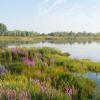
Calls to coordinate and strengthen the links between the global biodiversity and climate agendas are growing. Nature-based solutions (NbS) are one of the priorities identified by the UK UNFCCC COP 26 Presidency to achieve the goals set by the Paris Agreement.
 © IIASA
© IIASA
Given that NbS have the potential to provide a strong policy connection between the three Rio Conventions on Biodiversity, Climate Change and Desertification — this provides an opportunity for Presidencies and Secretariats of all three agreements to work together to achieve closer linkages in the lead up to and through the 2021 Super Year for Nature.
Further, more than 75 countries supporting the Leaders’ Pledge for Nature have committed to addressing a range of environmental challenges including climate change and biodiversity loss ‘in an integrated and coherent way’. In this project, where IIASA collaborates with UNEP-WCMC, UN-SDSN, and IIS, we aim to quantify the role that achieving biodiversity conservation targets can play in securing the emissions reductions needed to meet the objectives of the Paris Agreement.
We have first estimated the carbon stocks associated with areas identified as possible priorities to meet proposed global biodiversity conservation and restoration targets, in a report released in late 2020 building on work done through the Nature Map Initiative. In the first half of 2021 we will estimate the emission reductions expected from conserving or restoring these areas under plausible land-use scenarios.
These global analyses will be published in a technical report and a policy brief ahead of the 26th Conference of the Parties of the UNFCCC in Glasgow and are expected to inform climate mitigation pledges from countries with high-potential for emissions reductions and removals through nature conservation and restoration.
 © UN Environment Programme
© UN Environment Programme
